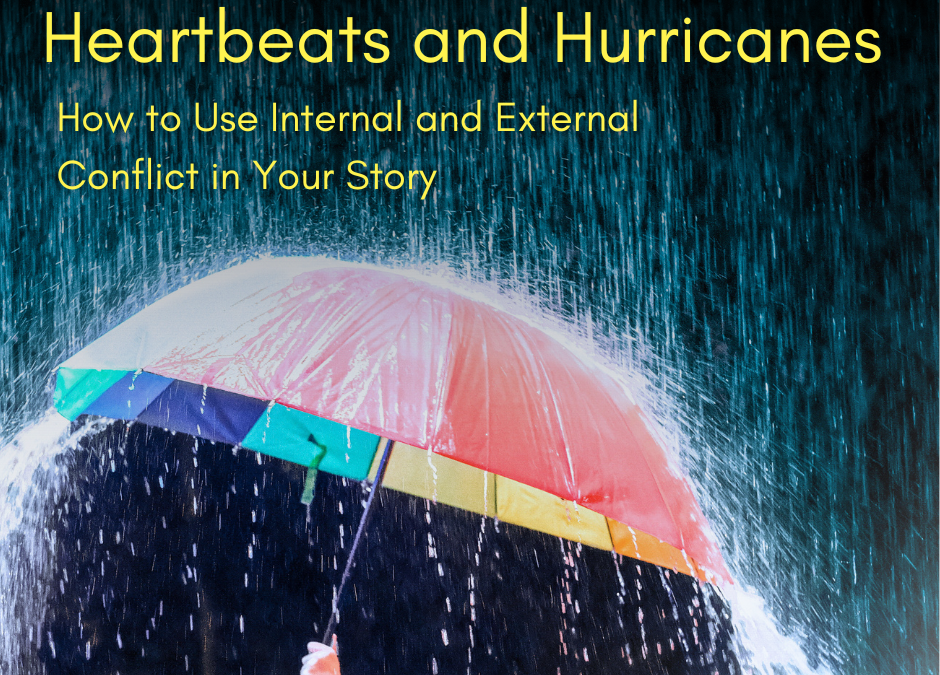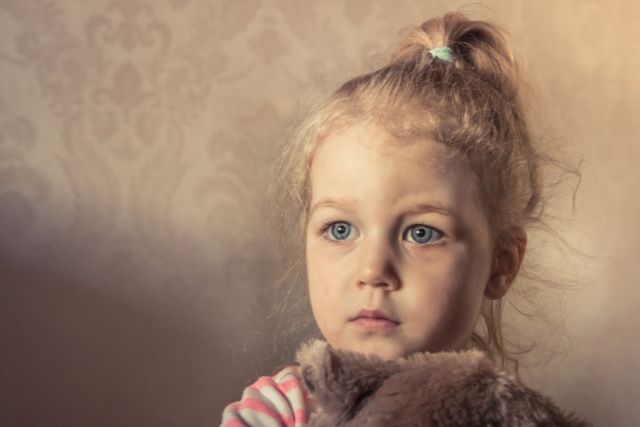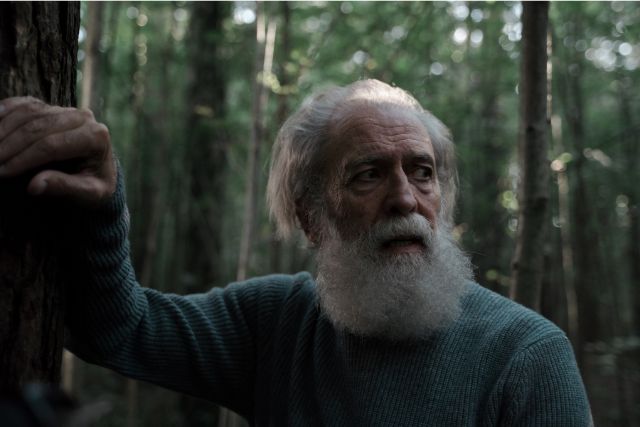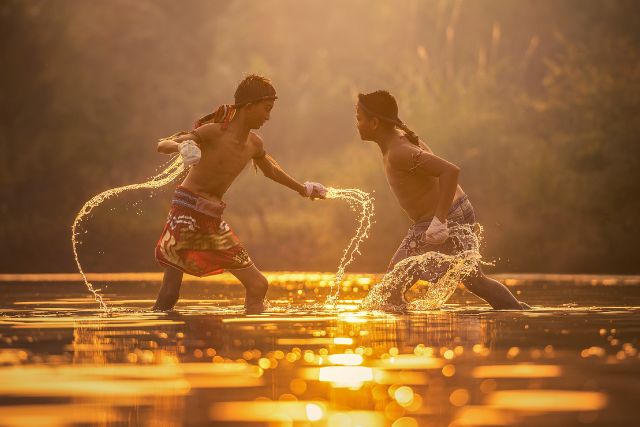The foundation of every story, from heart-wrenching romances to suspenseful thrillers, is conflict. Without it, stories would have a beginning and an ending, but nothing in between. If your characters aren’t working to overcome something, there is no story. Conflict often mirrors the pressure and struggles we face in real life, and stories rich with conflict result in more rewarding character journeys.
There are two types of conflict in storytelling. Internal conflict arises from the emotional and mental challenges your character faces. External conflict stems from the outside forces that stand in the way of your character fulfilling their goals.
Both types of conflict are essential for captivating your reader and making them care.
What is External Conflict in Literature?
External conflict can appear in many shapes, but whatever form it takes, the key is an antagonistic force making it difficult for your character to get what they want.
Conflict will either propel your character forward, driving them to face and overcome hardship, or will act as a barrier, forcing them to choose another approach. Every conflict your character comes across should either aid or thwart their pursuit towards their goal. Conflict should be introduced early and build upon itself, becoming increasingly difficult at each turn of the plot.
Stakes
When building conflict throughout your story, it’s important to consider the stakes your character will face if they fail. What does your character stand to lose, both personally and on a global scale, if they don’t succeed in achieving their goal? And, it’s just as important to know what your character hopes to gain. What does victory look like to your character? Strong stakes make the reader feel the weight of your character’s obstacles and the rising conflict. This building tension is what has your reader worrying for your protagonist, and more importantly, has them turning the page.
Tension
Strong conflict keeps your reader on the edge of their seat, stirring up tension and gluing them to the pages. Each scene needs either tension or conflict to keep your reader engaged. The two are closely related, but they aren’t the same. Tension is the anticipation and worry the reader feels about what will happen next, while conflict is the danger in action. Conflict is what materializes from well-crafted tension. Tension can be loud and dramatic, but not all tension has to be extravagant to be gripping. Tension can be as subtle as the silence during a fight between husband and wife. What matters is that your reader wants to know what will happen next.
Examples of External Conflict
Character Vs Character
In character vs character conflict, two characters are in direct opposition to each other. The opposing character could be a vicious villain, or they could take the form of a friend or acquaintance who introduces a contrasting view or perspective. Either way, the character pushes against the protagonist, preventing them from reaching their goals. This type of conflict is found in all good guy/bad guy tropes. One of my favorite examples is J.K. Rowling’s Harry Potter series. Harry battles against Voldemort who not only threatens him, but the entire wizarding world. Harry stands against everything Voldemort fights for, and they face off against one another in many epic encounters throughout the seven book series.
In romance, the love interest often serves as the antagonistic force. In Jane Austen’s Pride and Prejudice, Mr. Darcy challenges Elizabeth Bennet at every turn, foiling her plans to marry her sister to Mr. Bingley, insulting her character, and generally making her life more difficult. Mr. Darcy isn’t a bad guy. In fact, he’s her soul mate. But, Elizabeth must face the external conflict he instigates in order to reach her goal and marry for love. In the process, Elizabeth and Mr. Darcy confront their internal conflict, overcoming their pride and prejudice to find true happiness.
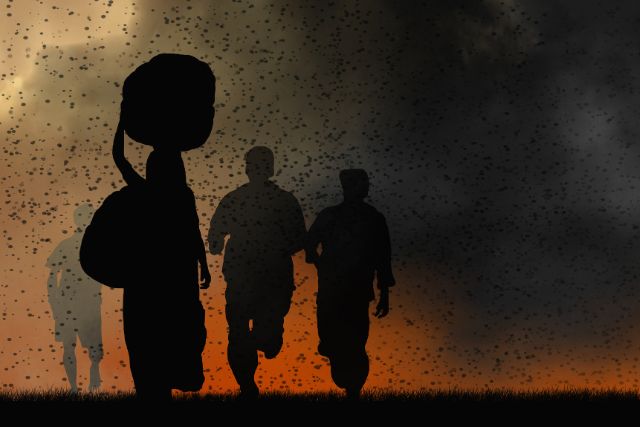
Character Vs Nature
In character vs nature conflict, the protagonist struggles against some natural force or environment. Not only does this type of struggle occur in reality, but because of the unpredictability and volatility of nature, there are many opportunities to use the challenge to emphasize the themes of your story. An example of character vs nature conflict can be found in The Hunger Games by Suzanne Collins. There are many types of conflict laced through this dystopian novel, but character vs nature comes into play for Katniss when she is thrust into the dangerous environment of the arena. Katniss struggles against raging fires, limited water and food, and wild, ferocious animals all while battling against the other contestants to survive the games.

Character Vs Supernatural
Character vs supernatural conflict is often found in the fantasy, science fiction, and paranormal genres. The antagonistic force is supernatural in nature, going beyond the limits of our ordinary world. The conflict might involve magic, otherworldly creatures, or mystical elements. In J.R.R Tolkein’s The Lord of the Rings, the characters battle against the supernatural force of the one ring. The ring offers unimaginable power, but it also overtakes the one who wears it, and the fight for possession of the ring leads to a war across all of Middle Earth.
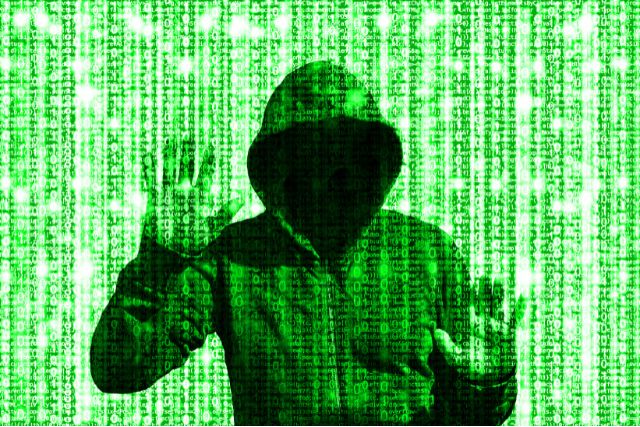
Character Vs Technology
Character vs technology conflict involves technological forces of opposition, whether robotic in nature, or manmade. This struggle often raises questions and introduces themes that explore what it means to be human and how we distinguish ourselves from machines. Character vs technology conflict is central in The Matrix. The world has been taken over by machines, and humans find themselves being used as a power source in a fabricated world. The protagonist, Neo, battles to expose the truth and free the human race from enslavement. Neo’s internal and external conflicts converge, and in order for Neo to gain full control of the Matrix and overturn the machines, he must move past his limiting beliefs and accept that he is The One.
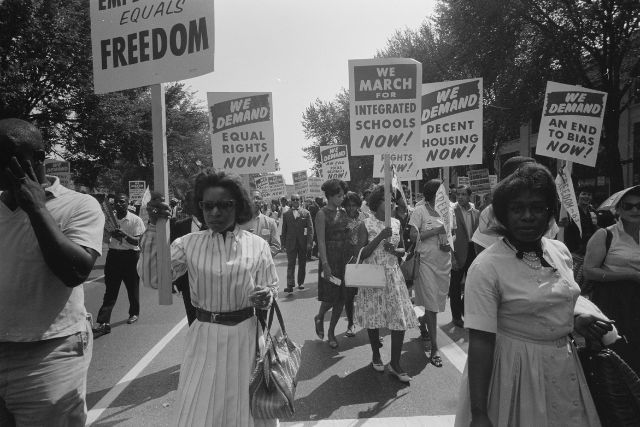
Character Vs Society
In character vs society, a character is in opposition with their culture, government, or the values, beliefs, or rules of their society. The protagonist might seek to overcome injustice, unveil the truth, expose corruption, or simply find a place where they can be free. Character vs society is very common in dystopian literature. In Veronica Roth’s Divergent, in order to maintain order and control, the ruling government splits the world into factions, categorizing citizens based on their qualities. Those who don’t conform are considered divergent and cast out into poverty. The protagonist, Tris, struggles to find her place in a totalitarian world, all while keeping her divergent status a secret.
What is Internal Conflict in Literature?
Meaningful internal conflict showcases how your character holds themselves back from their goals. The plot will often challenge your character and place them in a position where they come face-to-face with their internal conflict, forcing them to either give in or accept that they must change. They will experience many emotional ups and downs as they navigate the plot and attempt to overcome their inner obstacles. Whether your character undergoes an enormous transformation or more subtle growth, inner struggles help your reader connect to your characters on an emotional level.
I love to use Impact on Protagonist and Story Goal Tracking, two of Fictionary’s 38 Story Elements, to track my protagonist’s internal and external arcs as I write. Using these two elements, I can easily craft round, dynamic characters and examine how my characters move through the plot, getting closer to or farther away from achieving their goals in each scene.
Layers of Conflict
We build stories upon tangled layers of internal and external conflict. Stories are more relatable and compelling when internal and external conflict work together. Often a character striving for what they want (external) is forced to face what they need (internal) in order to succeed.Your character will need to vanquish their internal demons before they conquer their external barriers. Intricately woven conflict leads to more emotional, engaging, and satisfying stories.
Conflict in Character Backstory
Internal conflict occurs within a character and is invisible to the outside world, but that doesn’t make it any less important. The true theme of a story is often uncovered through the protagonist’s internal conflict, and a character’s inner obstacles are vital for creating a compelling arc of change. Crafting well-developed characters is the key to establishing strong internal conflict. Every character enters a story with their own past, beliefs, values, and flaws. It’s important to know your character’s backstory and the events that have shaped them, so the reader understands how deeply your character’s internal conflict is rooted.
Examples of Internal Conflict
Character Vs Self
Character vs self conflict is where the protagonist or character experiences opposition within themselves. This type of conflict can serve as the main conflict, particularly in character-driven stories, or it can provide additional tension to a predominant conflict. Characters facing character vs self conflict stand in their own way of change and reaching their goals. The way characters react to the events of the plot determines if the inner conflict will result in a positive or negative arc of change.
The character of Zuko from Avatar: The Last Airbender is a prime example of how a character’s choices in the face of opposition can lead them to redemption. Zuko’s internal conflict centers around his misbelief that gaining his father’s respect is the only way to receive love. But, the plot forces him to face his misconceptions. He realizes the key to happiness is to place his own perception of honor at the forefront of his decisions. He rejects his father’s ideals, shifting his actions to reflect his own morals, and finds love and acceptance in the process.
Character vs self conflict can also lead to a negative character arc, like that of Anakin Skywalker in Star Wars III: Revenge of the Sith. Anakin is possessive and fears losing the ones he loves. When the plot forces him to confront these fears, he responds by seeking more power to save his loved ones from death. This leads him down a path towards the dark side, thus beginning his transformation into the infamous Darth Vader.
Character Vs Fate
Character vs fate conflict is centered around a character’s struggle with their own destiny. The struggle grows around the character’s unwillingness to accept their fate and the predictions about their future. This type of conflict typically introduces complex inner struggles as the character grapples with accepting what’s to come. And while their destiny is typically inevitable, that doesn’t stop them from trying to change it.
In the film About Time, the protagonist Tim learns he can travel through time and alter past events from his own life. We see him wrestle with character vs fate conflict when he realizes his father is ill, and he can’t go back far enough to change his fate. The struggle intensifies when Tim learns his wife is pregnant, and once his father passes away, he can’t visit him in the past without risking his unborn child.
Conclusion: Using Internal and External Conflict in Your Story
The more deeply internal and external conflict are woven together, the more compelling the story. Conflict introduces relatable issues and struggles we often face in our real lives, forcing characters to look within at the beliefs, desires, and misconceptions they have about themselves and the world around them. We use conflict to challenge our characters and force them to rise to meet their biggest obstacles. More likely than not, this helps them become a better version of themselves through the journey. As readers, we love nothing more than watching our characters strive. Now, go have fun stirring up all sorts of internal and external turmoil for your characters and discovering how they’ll meet those obstacles. They might just surprise you!
Ali Bumbarger is a Fictionary Certified StoryCoach Editor and book coach. She is passionate about helping writers build their stories to their fullest potential. She offers actionable advice to help writers strengthen their unique voices and create novels readers love. You can learn more about Ali and other StoryCoach Certified Editors at Fictionary at https://fictionary.co/editors
